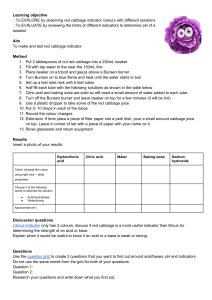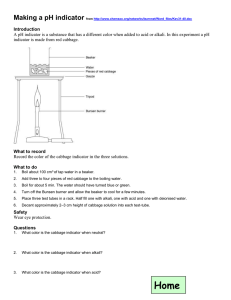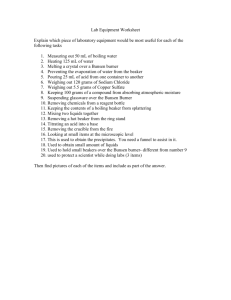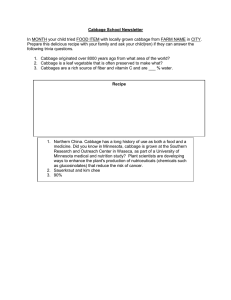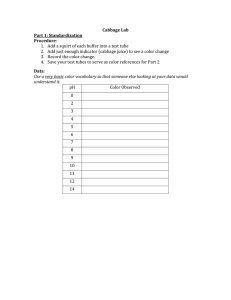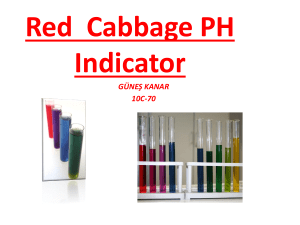Risk Assessment in Science Experiments: Acids & Alkalis
advertisement
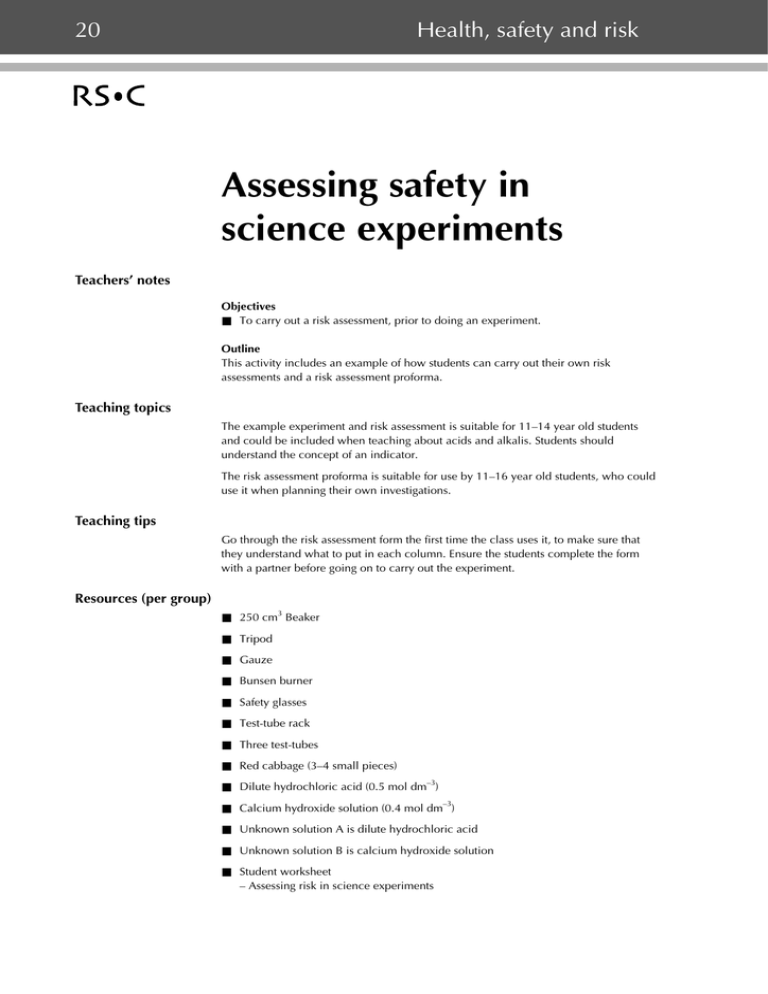
20 Health, safety and risk Assessing safety in science experiments Teachers’ notes Objectives ■ To carry out a risk assessment, prior to doing an experiment. Outline This activity includes an example of how students can carry out their own risk assessments and a risk assessment proforma. Teaching topics The example experiment and risk assessment is suitable for 11–14 year old students and could be included when teaching about acids and alkalis. Students should understand the concept of an indicator. The risk assessment proforma is suitable for use by 11–16 year old students, who could use it when planning their own investigations. Teaching tips Go through the risk assessment form the first time the class uses it, to make sure that they understand what to put in each column. Ensure the students complete the form with a partner before going on to carry out the experiment. Resources (per group) ■ 250 cm3 Beaker ■ Tripod ■ Gauze ■ Bunsen burner ■ Safety glasses ■ Test-tube rack ■ Three test-tubes ■ Red cabbage (3–4 small pieces) –3 ■ Dilute hydrochloric acid (0.5 mol dm ) –3 ■ Calcium hydroxide solution (0.4 mol dm ) ■ Unknown solution A is dilute hydrochloric acid ■ Unknown solution B is calcium hydroxide solution ■ Student worksheet – Assessing risk in science experiments Health, safety and risk 21 Practical tips Supervise carefully as students boil their cabbage for 10 minutes. Bunsen burners can then be switched off. Beakers can then be lifted carefully off the tripods. Timing 30 minutes each for the risk assessment and experiment. Adapting resources The student worksheet Assessing risk in science experiments can be adapted to use with any experiment or investigation by deleting the instructions for making a pH indicator and replacing them with another experiment. This activity can be made more accessible to the less able student by previously identifying all the hazards on the sheet. This could be done for example by printing key works in bold and using arrows to identify hazardous pieces of equipment. Answers A completed risk assessment form Chemical or Procedure or microorganism equipment Hazard Precaution taken Source of to control risk information Dilute acid Low hazard Wear safety glasses. Avoid contact with hands eg CLEAPSS student safety sheet Dilute alkali Low hazard Wear safety glasses. Avoid contact with hands eg CLEAPSS student safety sheet Boiling the water Bunsen burner Turn to yellow My knowledge flame when not or teacher in use. Watch the experiment so that the water does not boil over Lifting hot beaker Burnt fingers Leave to cool down a bit or use tongs Questions after the experiment 1. Green/yellow 2. Purple/red 3. Red 4. Unknown A is acid and B is alkali. My experience Assessing risk in science experiments Whenever investigations are carried out at school you need to decide if the experiment is safe. You should carry out a risk assessment, which is checked by your teacher. ■ Read through the method you have been given. ■ Identify all the hazards. ■ Look up the appropriate student safety sheets. ■ Fill in the risk assessment form and ask your teacher to check it. ■ Carry out the experiment. ■ Answer the questions. Making a pH indicator Beaker Water Pieces of red cabbage Gauze Tripod Bunsen burner ■ Boil about 100 cm3 of tap water in a beaker. ■ Add three to four pieces of red cabbage to the boiling water. ■ Boil for about 5 minutes. The water should have turned blue or green. ■ Turn off the Bunsen burner and allow the beaker to cool for a few minutes. ■ Place three test-tubes in a rack. Half fill one with alkali, one with acid and one with deionised water. ■ Decant approximately 2–3 cm height of cabbage solution into each test-tube. ■ Test solutions A and B with the cabbage solution to see if they are neutral, alkaline or acidic. P OP Y PHO TO C Assessing risk in science experiments – page 1 of 3 Questions 1. What colour is the cabbage indicator when neutral? 2. What colour is the cabbage indicator when alkali? 3. What colour is the cabbage indicator when acid? 4. Are the two unknown solutions A and B neutral, alkaline or acidic? P OP Y Assessing risk in science experiments – page 2 of 3 PHO TO C Risk assessment form Name of investigation ________________________________________________________________________________ Name of students in group ____________________________________________________________________________ Class ________________________________________________ Chemical or microorganism Procedure or equipment Date _______________________________________ Hazard P OP Y PHO TO C Assessing risk in science experiments – page 3 of 3 Precaution taken to control risk Source of information
